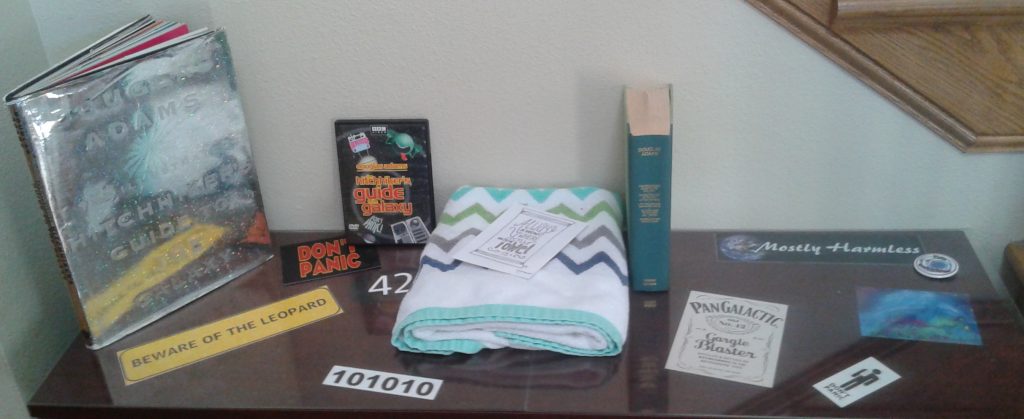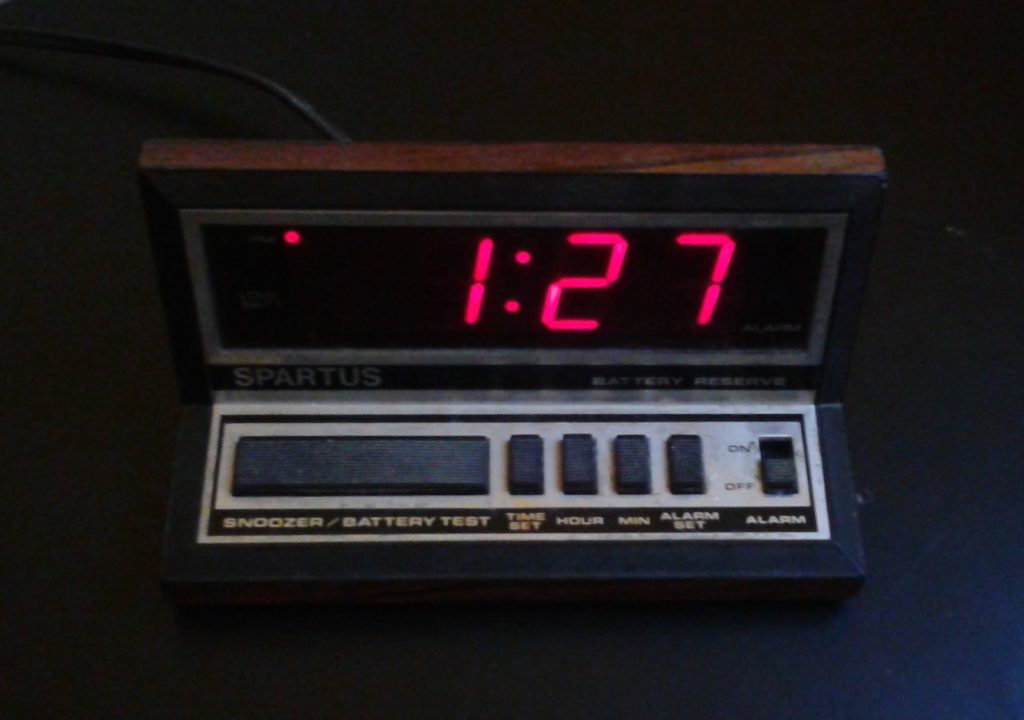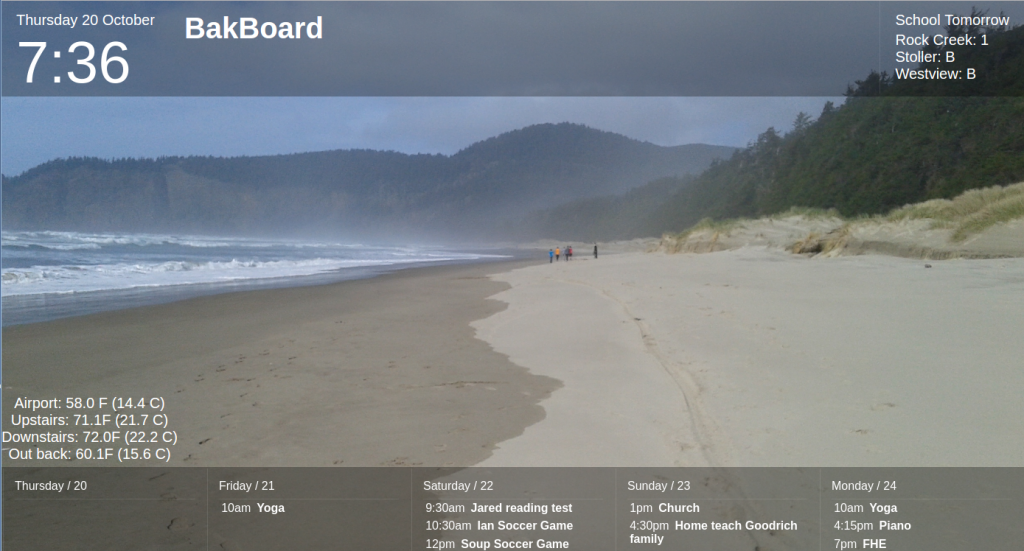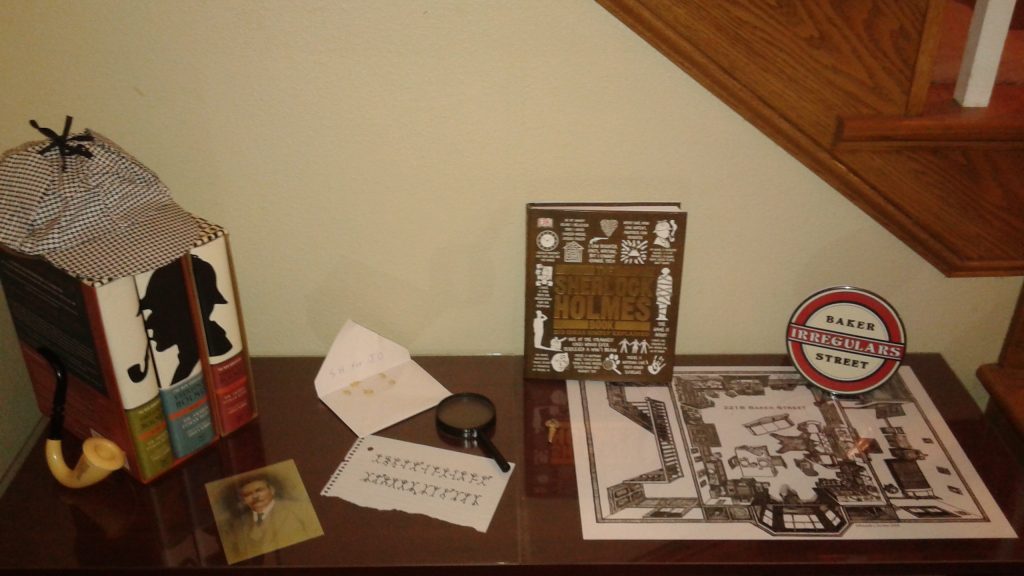
I was still in elementary school when I was first introduced to The Hitchhiker’s Guide to the Galaxy. Initial contact was the 1984 video game on a Commodore 64 which I initially thought to be a clone of Zork, but quickly discovered it was much sillier. I died frequently and never made it very far, but I learned to put on a robe before trying to access the pockets and to lay down in front of bulldozers.
Later (but still during my elementary school years), the BBC showed the television series. I was expecting something like Doctor Who (and Douglas Adams even wrote “City of Death” which is one of my favourite Doctor Episodes), but quickly discovered it was much sillier. Of all the bits in the show, the thing I remember the most is at the Restaurant at the End of the Universe where the animal that wants to be eaten.
In middle school I finally read the first book and in high school school I read everything available in the series at the time. I also explored and enjoyed the world of Dirk Gently and his Holistic Detective Agency (my favourite part of those books being the sofa in the stairway). By then I was sufficiently well-versed in the works to be able to claim to know the location of my towel.
In college there was a guy in the dorm that had the original radio show in cassette tape and he was kind enough to let me make a copy. I’m typically not a fan of that sort of audio format–it’s much slower than reading and requires more effort than media that has associated visual components. Nevertheless, I really enjoy the radio show and it is my preferred version of the story. Over the years first the radio show (now in mp3 format rather than cassette) has continued to provide entertainment during road trips.
I enjoy the silliness associated with “The Guide” in all it’s many forms–it has been and continues to be a source of entertainment for me and my family. If I had to choose a favourite media format, I would have to go with the radio show version. While I suspect that more people have read the book, I feel it is definitely worth a listen.
 My alarm clock was a Christmas gift from my older sister in 1984 when my family was living in Papillion Nebraska (just outside Omaha). I wanted an alarm clock so I was pleased to receive it, but I do recall mild disappointment because it wasn’t a fancy clock radio combination. The alarm clock has been used regularly for 32 years and I hope it keeps working. Devices have supposedly gotten a lot smarter over the past three decades, but I really like my dumb device.
My alarm clock was a Christmas gift from my older sister in 1984 when my family was living in Papillion Nebraska (just outside Omaha). I wanted an alarm clock so I was pleased to receive it, but I do recall mild disappointment because it wasn’t a fancy clock radio combination. The alarm clock has been used regularly for 32 years and I hope it keeps working. Devices have supposedly gotten a lot smarter over the past three decades, but I really like my dumb device.
